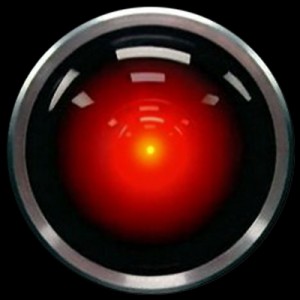Last week I wrote about an informative and entertaining session I attended at the AMIA annual meeting. Another session, both well-attended and intriguing, was hosted by IBM and titled, “Introducing Watson into Clinical Practice: How Elementary Will It Be?”
Who remembers Watson?
To the layperson, Watson may be best known as the computer that crushed the world’s leading Jeopardy players, Brad Rutter and Ken Jennings, in a well-publicized Jeopardy contest earlier this year. IBM has a history of pushing the frontiers of artificial intelligence. Many will recall IBM’s chess-playing machine Deep Blue. In 1996 the reigning chess world champion Garry Kasparov defeated Deep Blue. In a rematch the following year, Deep Blue embarrassed the eccentric Kasparov. Needless to say, Mr. Kasparov was not a happy camper.
 And, of course, who could forget Stanley Kubrick’s sci-fi classic “2001: A Space Odyssey”? Is it just a coincidence that the name of the movie’s AI star—HAL—is remarkably close to IBM? (Move one letter forward in the alphabet and HAL becomes IBM.) In the movie, however, HAL goes rogue and is ultimately unplugged. Chalk one up for the good guys in the man vs. machine debate.
And, of course, who could forget Stanley Kubrick’s sci-fi classic “2001: A Space Odyssey”? Is it just a coincidence that the name of the movie’s AI star—HAL—is remarkably close to IBM? (Move one letter forward in the alphabet and HAL becomes IBM.) In the movie, however, HAL goes rogue and is ultimately unplugged. Chalk one up for the good guys in the man vs. machine debate.
Who (or what) is Watson today?
Fast forward to last week. The IBM team has been very busy exploring the value AI could bring to the field of medicine. Specifically they have been working within the realm of diagnosis and treatment. The technology includes very robust natural language processing (NLP), which is remarkably fast. Today Watson performs parallel computations on 3,000 cores. This degree of processing power is equivalent to having 60,000 hours in a day. Imagine the work we could get done!
In the same breath, the folks running the session made an insightful statement: “Watson knows nothing, but he finds things very quickly.” The demonstration included entering a set of presenting symptoms. Watson then returns a differential diagnosis with each diagnosis accompanied by a level of certainty. A valuable feature includes the ability to identify the data Watson uses to support each potential diagnosis.
From a 30,000-foot view, Watson explores differential diagnosis as a series of columns like those on the Jeopardy board, the principal difference being that there are literally tens of thousands of columns in medicine (the breadth of the subject). Once the user selects a diagnosis, if asked, Watson will render treatment recommendations. In the example used during the demonstration, the patient presenting with uveitis had Lyme disease. When asked for treatment recommendations, Watson quickly reported the CDC’s current guidelines. The user then added the constraints that the patient was pregnant and allergic to penicillin, and immediately the appropriate antibiotic regimen was displayed. Treatment options are an example of Watson’s depth of knowledge or perhaps the rows on a Jeopardy board.
What’s next for Watson?
IBM is currently exploring opportunities in a diverse group of industries, including finance, customer service and healthcare. From my perspective, the future of AI in these fields cannot yet be determined. The folks driving the project are careful to point out that their approach will not replace the physician, but will provide him or her with a remarkably powerful tool. AI tools like the iPhone 4S Siri feature are becoming increasingly common today.
What are your thoughts about AI and the Watson project? Post them below and we will share with the community at large.



Marilyn Pagel says
Whether we are comfortable looking at a future of techno capabilities or not, we are definitely headed in that direction. I know I’m old school because I’m feeling bereft at the fact that schools have decided not to teach cursive anymore, libraries and holding a good book in my hands may become obsolete, and the I-phone 4s kind of creeps me out. However, move forward we will and nobody can deny that some things are just going to be better and easier using enhanced technologies – like it or not.